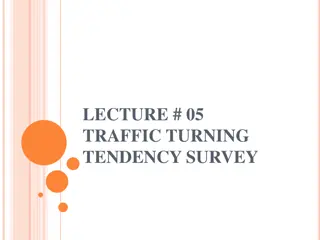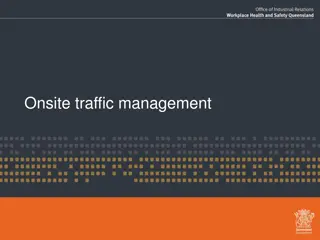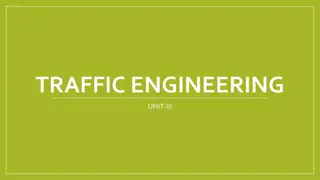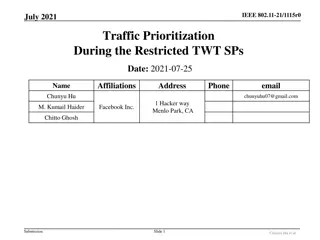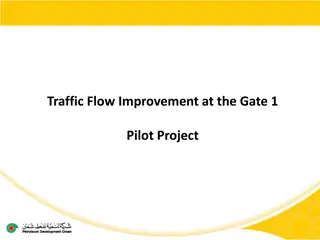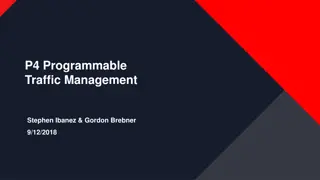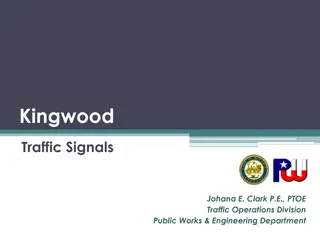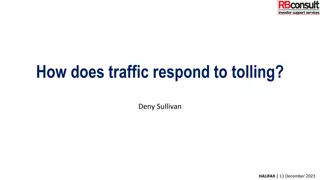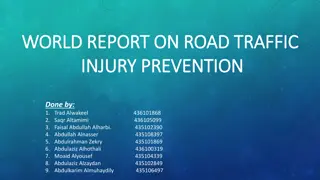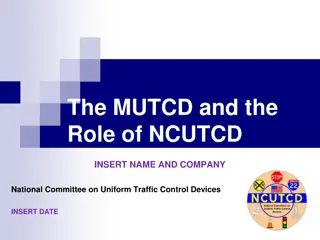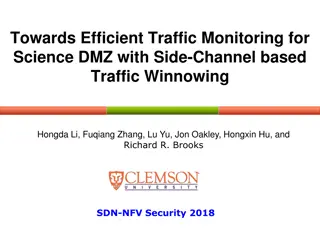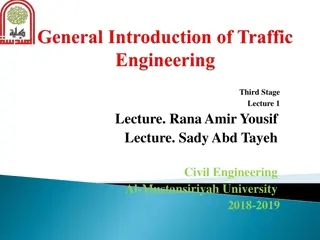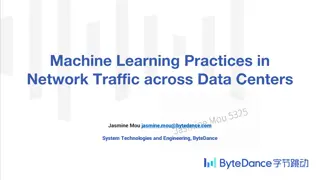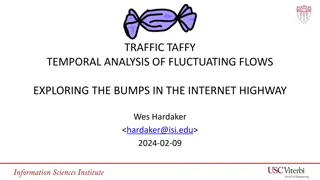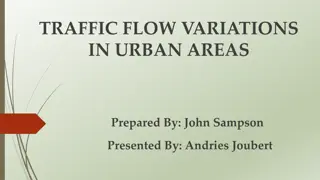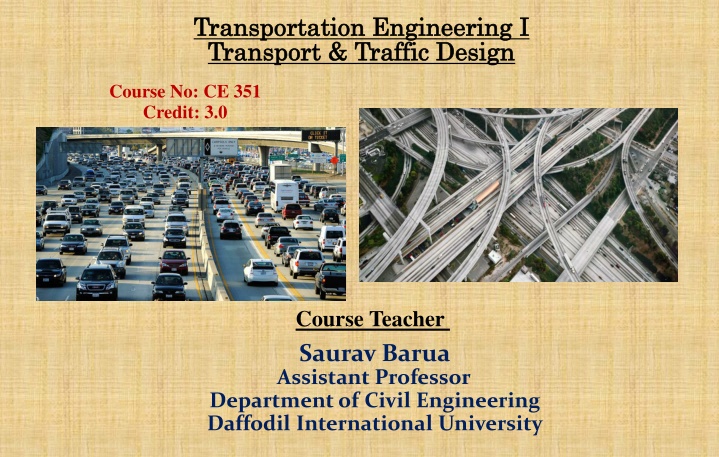
Traffic Engineering: Concepts and Evolution
Traffic engineering is a vital aspect of transportation engineering, focusing on traffic measurement, laws, and safe movement of people and goods. The field has evolved from simple regulations to dynamic measures involving public transport and IT, aiming for efficient traffic management. Understanding the history and modern practices of traffic engineering is crucial for designing safe and effective road networks.
Uploaded on | 1 Views
Download Presentation

Please find below an Image/Link to download the presentation.
The content on the website is provided AS IS for your information and personal use only. It may not be sold, licensed, or shared on other websites without obtaining consent from the author. If you encounter any issues during the download, it is possible that the publisher has removed the file from their server.
You are allowed to download the files provided on this website for personal or commercial use, subject to the condition that they are used lawfully. All files are the property of their respective owners.
The content on the website is provided AS IS for your information and personal use only. It may not be sold, licensed, or shared on other websites without obtaining consent from the author.
E N D
Presentation Transcript
Transportation Engineering Transportation Engineering I I Transport & Traffic Design Transport & Traffic Design Course No: CE 351 Credit: 3.0 Course Teacher Saurav Barua Assistant Professor Department of Civil Engineering Daffodil International University
Course Contents Transportation Planning: Concepts and Modeling Geometric Design of Highways Road Intersections and Interchanges Traffic Engineering
Introduction # Traffic Engineering deals with the operational aspect of transportation engineering # It is the science of - measuring traffic and travel, - the study of basic laws relating to traffic flow and generation, and - the application of knowledge to the professional practice of planning, designing and operating traffic systems to achieve safe and efficient movement of persons and goods.
History traffic engineering as it known today has evolved gradually with increase in traffic (vehicles and pedestrians) Initially it was limited to application of simple rules and regulations such as left driving rule, road signs, marking, and intersection control by flag etc. Subsequent analysis of traffic operations and road accidents led to the realization the traffic regulations and other methods of traffic control should be based on proper engineering studies. In consequence as extension of traffic regulations many new traffic control and management techniques were devised viz. speed zoning, traffic signals, turn restrictions, parking restrictions, bus priorities, on-way streets etc. Eventually it become evident that the planning and design of efficient road network largely depends upon the integrated land-use & transport policies and effective demand management (road pricing control & distribute peak hours demand)
History Modern traffic engineering measures are mostly restrictive and dynamic in nature and largely depend on - Public Transport Facilities and - Information Technology (IT) Side by side adhere TOD (Transit Oriented Development) approach
Traffic Engineering includes Studies and analysis of traffic characteristics and flow parameters Geometric design (mainly improvement) Planning of regulatory measures Design and application of control devices Functional planning of road network
Why TE is so essential now-a-days? Because of Increased urbanization process Increased traffic demand phenomenal growth in traffic Congestion become a chronic in everywhere Difficulties in expanding roadway facilities within built up areas Therefore, there is a need to maximize the utilization of existing facilities by better traffic management and control measures. Moreover, there is a need to tackle: Increased air pollution Increased accident numbers Increased road network
Bottlenecks - sources of flow interruption; which causes sudden decrease of vehicles speed and roadway capacity. Bottlenecks are the main causes of congestion. - A junction or section of road that has lower traffic capacity than the road either side, and is therefore a cause of frequent congestion. - A traffic bottleneck is a section of road in which congestion is observed - Lots of vehicles - Forward motion is impeded
Common bottlenecks or causes of congestion # Geometric Factors - road intersections - railway crossings - narrow road/bridge/culverts - inconsistent roadway width - poor turning radius/sharp bend
Common bottlenecks or causes of congestion # Road Side Frictions - scattered parking - frequent side roads entries - bus stops/parking near intersections - road side cut - poor drainage facility # Poor Roadway Environment - poor road discipline - uncontrolled pedestrian crossing - poor road surface condition - speed breaker - poor lighting
Common bottlenecks or causes of congestion # Traffic Internal Frictions - due to mixed or heterogeneous traffic stream - if traffic demand (volume) > roadway capacity - due to undue conflicts with the turning movements # Poor Roadway Environment - poor road discipline - uncontrolled pedestrian crossing - poor road surface condition - speed breaker - poor lighting
Safety problems arises mainly - - - - At intersections Where pedestrian activities are high Along on-street parking At blind spots viz. bends, spots with poor sight distance/lighting facilities etc. Safety problems arises due to - Poor road surface condition - Faulty road geometry - Poor traffic operating condition lack of traffic control devices - Drivers faults - Mechanical failure
Traffic Engineering Tools # Physical tools/measures A. To control vehicular movements - road signals/signs/markings - road divider/channelization/island - exclusive turning lane flaring/widening of intersection - service road/ring road/by-pass - bus lay-by - speed breakers - segregated bus lane - segregated non-motorized vehicle (NMV) lane - grade separation etc.
Traffic Engineering Tools B. To control standing vehicles - on/off street parking - off street loading/unloading for freight vehicles - park and ride facilities - terminals etc. C. To control pedestrian movements - guard rail/median/pedestrian barriers - raised side walk/footpath - cross walk - un-signalized Zebra crossing - signalized time separated/sharing - grade separated underpass/overpass
Traffic Engineering Tools # Regulatory measures - banning right turn - one-way operation - tidal flow operation - intersection clear way - speed control - parking control - access control - road pricing etc.

